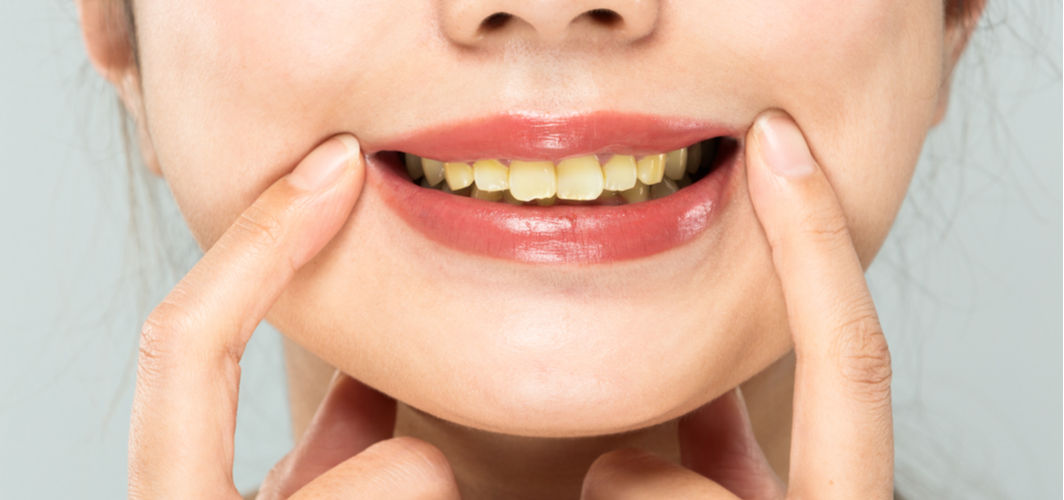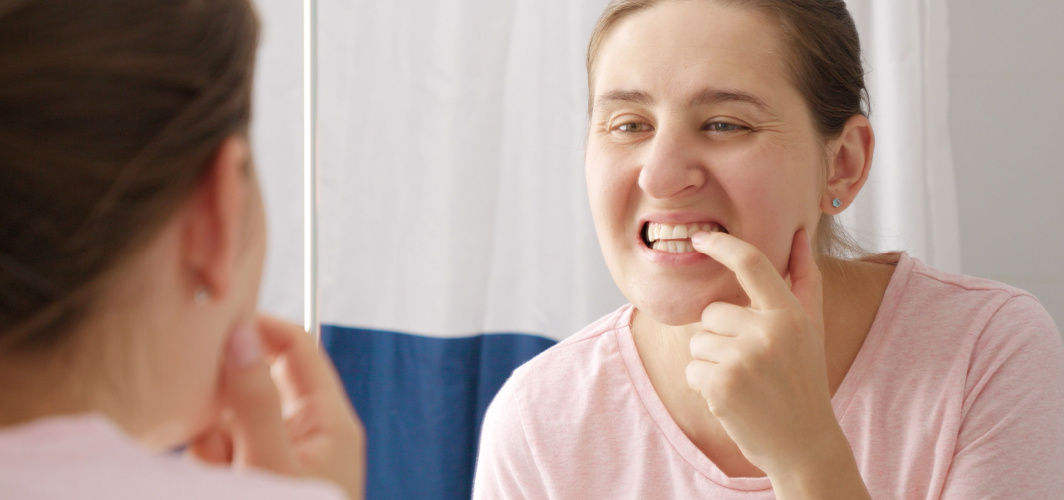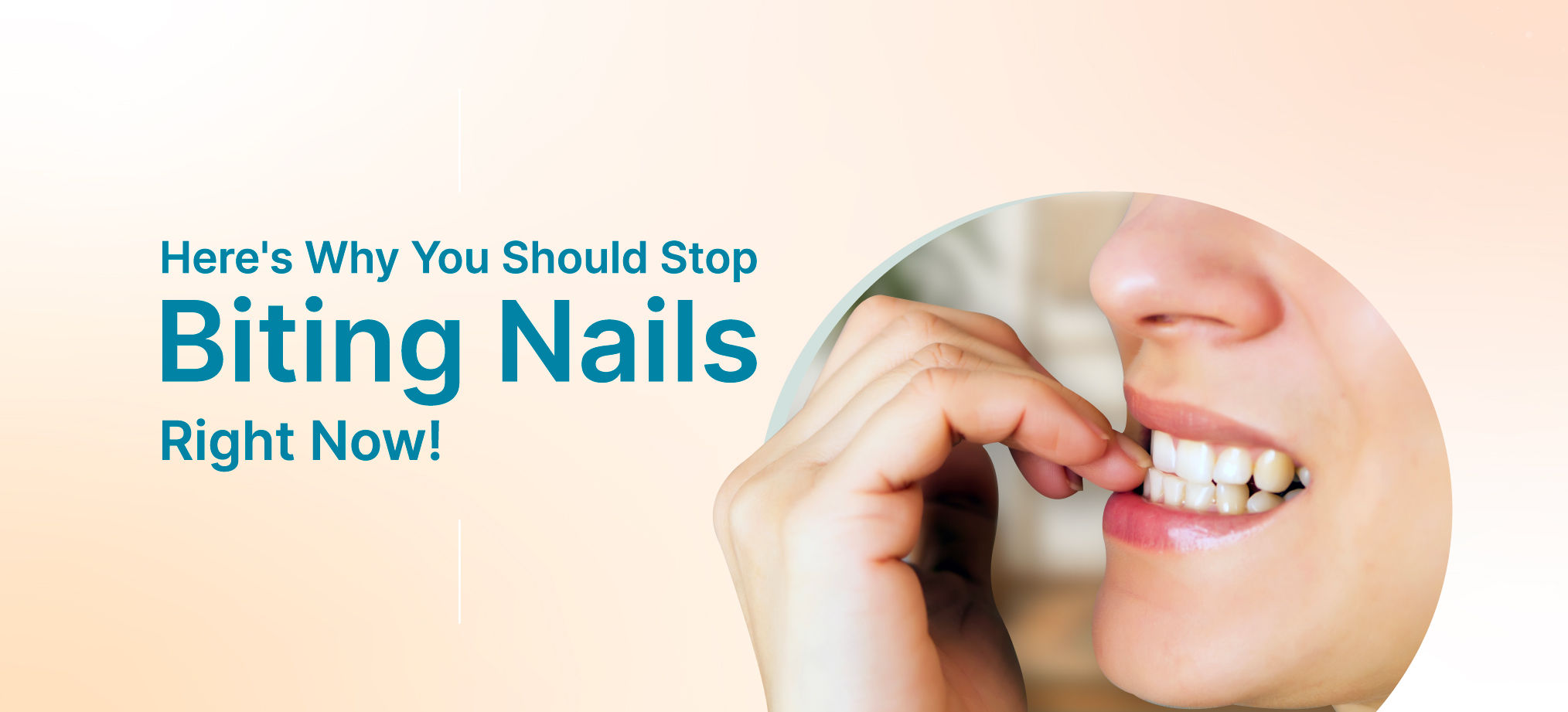Oral & Dental
What Causes Tooth Discolouration?
3 min read
By Dr Sonia Bhatt, Dental Surgeon - 17 March 2022, Updated on - 10 January 2024
Share this article
0
21 likes

While we all wish to have a set of gleaming teeth like movie stars, most of us have some kind of tooth discolouration. The natural colour of adult teeth is yellowish-white but when the enamel (the outer layer of the teeth) gets stained by food, drinks, or other reasons the tooth colour changes. Let us address the causes that may result in discolouration of the tooth.
What are the reasons for tooth discolouration?
Some of the most common reasons for tooth discolouration include:
- Edible pigments: Excessive use of food colours, spices (such as turmeric), coffee, and tea can cause the teeth to appear yellow and form brown-coloured stains on the teeth.
- Poor oral hygiene: Improper brushing of teeth can lead to the development of yellow-coloured plaque (bacterial layer) on the outer surface of the teeth. If not removed, this plaque can calcify and form hard tartar called calculus.
- Smoking: Tobacco and other harmful products present in cigarettes can develop yellow to brown stains on the surface of teeth.
- Dental fillings: Dental fillings containing mercury and silver powder can corrode inside the tooth cavity, leaving a black stain on the surrounding teeth.
- Trauma: A hit or blow in the mouth can damage the nerves of the teeth, restricting their blood supply. This can cause blackening of the affected teeth.
- Faulty tooth development: Enamel hypoplasia is a defect that occurs in the enamel of the teeth while they are under development. This can result in white spots, pits, and grooves on the outer surface of the teeth.
- Fluorosis: Exposure to excessive fluoride (either through water or toothpaste) can result in white, yellow, or brown-coloured stains on the teeth, which is known as fluorosis.
- Medicine: Prolonged use of anti-allergic medicines, blood pressure medicines, and antibiotics such as tetracycline and doxycycline can cause tooth discolouration. Mouthwashes containing chlorhexidine and cetylpyridinium chloride can also cause staining of teeth.
Recommended reading: Common Myths About Dental Health - Busted
Ways to reduce teeth discolouration
Measures that may help reduce tooth discolouration include:
- Maintain oral hygiene by brushing the teeth regularly with toothpaste and a soft-bristled toothbrush.
- Quit smoking and chewing tobacco.
- Avoid the use of fluoridated toothpaste in children until they attain the age of 5 years.
- Discontinue the use of mouthwash for at least a week after using it continuously for 21 days.
- Rather than getting silver-containing dental fillings, use tooth-coloured bio-active tooth fillings such as composite and Glass Ionomer Cement.
- Get dental scaling done every six months to get rid of plaque and calculus.
- Get dental bleaching done after consulting dentists to whiten the teeth. Avoid using self-bleaching kits at home as they may harm the gums.
- Get veneers or zirconia/porcelain crowns on the malformed teeth to improve their appearance.
- Treat the damaged tooth nerves with the help of root canal treatment followed by the placement of the crown.
Recommended reading: Dental Procedures: Frequently Asked Questions
How to remove teeth discolouration?
Dr Roshni Khanna, a dentist associated with Apollo 24|7, states that “Teeth discolouration can be removed by:
- Maintaining proper oral hygiene
- Getting scaling and polishing done
- Reducing the intake of caffeine
- Quitting smoking
- Dental procedures like bonding and bleaching
- Dental veneers and crowns
You can visit a dental clinic and ask your doctor for the best possible treatment for your teeth.”
Tooth discolouration can either be a result of lifestyle habits such as smoking or a sign of other dental issues such as enamel hypoplasia or fluorosis. While quitting unhealthy habits, brushing regularly, and judicious use of mouthwash can help reduce tooth discolouration, people may require professional whitening to get rid of stubborn tooth stains.
Want to get rid of your discoloured teeth?
Oral & Dental
Leave Comment
Recommended for you

Oral & Dental
Is Severe Gum Bleeding A Sign Of Diabetes?
There is a two-way link between diabetes and oral health, particularly gum disease. People with diabetes are at a higher risk of developing oral health problems due to the impact of high blood sugar on the mouth. The article provides tips on how to maintain good oral health for overall diabetes management.

Oral & Dental
5 Bad Habits That Can Damage Your Teeth And Decline Oral Health
When it comes to your overall well-being, good oral health is essential. Certain bad habits can significantly damage your teeth and cause several oral health issues. This blog underlines the top 5 habits you need to quit right away to keep your teeth in the best possible condition.

Oral & Dental
Teeth Whitening: Types, Risks, Side Effects, Results
Achieve a brighter smile with professional teeth whitening. Learn about the different types of teeth bleaching techniques, their risks, side effects and results.
Subscribe
Sign up for our free Health Library Daily Newsletter
Get doctor-approved health tips, news, and more.
Recommended for you

Oral & Dental
Is Severe Gum Bleeding A Sign Of Diabetes?
There is a two-way link between diabetes and oral health, particularly gum disease. People with diabetes are at a higher risk of developing oral health problems due to the impact of high blood sugar on the mouth. The article provides tips on how to maintain good oral health for overall diabetes management.

Oral & Dental
5 Bad Habits That Can Damage Your Teeth And Decline Oral Health
When it comes to your overall well-being, good oral health is essential. Certain bad habits can significantly damage your teeth and cause several oral health issues. This blog underlines the top 5 habits you need to quit right away to keep your teeth in the best possible condition.

Oral & Dental
Teeth Whitening: Types, Risks, Side Effects, Results
Achieve a brighter smile with professional teeth whitening. Learn about the different types of teeth bleaching techniques, their risks, side effects and results.